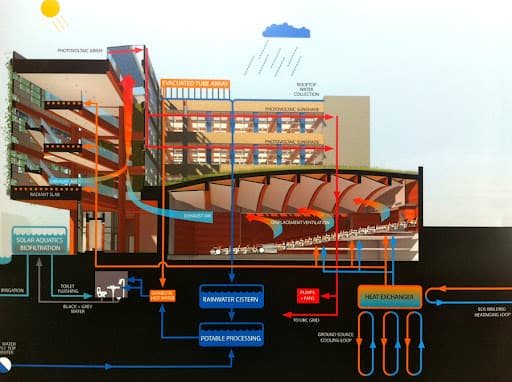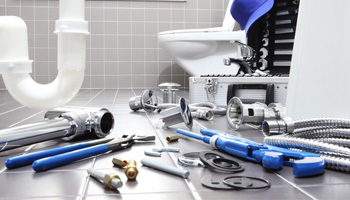We have encountered the article on Anatomy of a House: Understanding the Components below on the net and reckoned it made good sense to talk about it with you on this page.

Comprehending exactly how your home's pipes system functions is essential for every property owner. From providing tidy water for alcohol consumption, food preparation, and bathing to safely removing wastewater, a well-kept pipes system is vital for your family members's wellness and convenience. In this comprehensive guide, we'll explore the elaborate network that comprises your home's plumbing and deal ideas on upkeep, upgrades, and taking care of usual issues.
Introduction
Your home's plumbing system is more than just a network of pipes; it's a complicated system that ensures you have access to clean water and efficient wastewater removal. Knowing its components and how they work together can help you prevent costly repairs and ensure everything runs smoothly.
Standard Elements of a Plumbing System
Pipes and Tubing
At the heart of your plumbing system are the pipelines and tubes that lug water throughout your home. These can be made from different materials such as copper, PVC, or PEX, each with its advantages in terms of durability and cost-effectiveness.
Components: Sinks, Toilets, Showers, etc.
Fixtures like sinks, toilets, showers, and bathtubs are where water is made use of in your house. Understanding just how these components link to the plumbing system helps in diagnosing troubles and preparing upgrades.
Valves and Shut-off Points
Shutoffs regulate the circulation of water in your plumbing system. Shut-off valves are critical throughout emergencies or when you need to make fixings, permitting you to isolate parts of the system without disrupting water circulation to the whole home.
Water Supply System
Key Water Line
The primary water line connects your home to the municipal water or a private well. It's where water enters your home and is dispersed to different fixtures.
Water Meter and Stress Regulator
The water meter measures your water use, while a pressure regulator makes certain that water streams at a safe stress throughout your home's plumbing system, preventing damages to pipes and fixtures.
Cold Water vs. Hot Water Lines
Comprehending the distinction in between cold water lines, which supply water straight from the primary, and hot water lines, which bring heated water from the hot water heater, assists in repairing and planning for upgrades.
Drainage System
Drain Pipes Pipes and Traps
Drain pipelines carry wastewater far from sinks, showers, and bathrooms to the sewage system or sewage-disposal tank. Traps stop sewer gases from entering your home and additionally trap particles that could trigger clogs.
Air flow Pipes
Air flow pipes enable air right into the drain system, protecting against suction that might reduce drainage and create traps to vacant. Proper ventilation is crucial for preserving the honesty of your plumbing system.
Value of Proper Drain
Making certain proper drain protects against backups and water damages. On a regular basis cleaning drains and keeping traps can avoid pricey repairs and prolong the life of your pipes system.
Water Heating System
Kinds Of Hot Water Heater
Water heaters can be tankless or conventional tank-style. Tankless heating systems heat water on demand, while storage tanks save heated water for prompt use.
Upgrading Your Pipes System
Factors for Upgrading
Upgrading to water-efficient fixtures or changing old pipelines can improve water high quality, minimize water costs, and increase the value of your home.
Modern Plumbing Technologies and Their Advantages
Discover technologies like smart leak detectors, water-saving bathrooms, and energy-efficient hot water heater that can conserve money and decrease environmental effect.
Price Factors To Consider and ROI
Determine the ahead of time prices versus long-term savings when thinking about plumbing upgrades. Lots of upgrades spend for themselves via lowered energy costs and less fixings.
How Water Heaters Connect to the Plumbing System
Understanding how water heaters connect to both the cold water supply and hot water circulation lines aids in identifying problems like inadequate hot water or leakages.
Upkeep Tips for Water Heaters
Routinely flushing your water heater to remove sediment, examining the temperature level settings, and examining for leaks can expand its lifespan and improve power effectiveness.
Common Plumbing Concerns
Leakages and Their Causes
Leakages can happen due to maturing pipelines, loose fittings, or high water stress. Attending to leaks without delay protects against water damages and mold and mildew growth.
Clogs and Clogs
Blockages in drains and commodes are typically caused by purging non-flushable products or a buildup of oil and hair. Utilizing drainpipe displays and being mindful of what drops your drains can prevent clogs.
Indicators of Plumbing Problems to Look For
Low water stress, sluggish drains pipes, foul odors, or uncommonly high water expenses are signs of possible plumbing troubles that ought to be dealt with promptly.
Pipes Maintenance Tips
Normal Evaluations and Checks
Set up annual pipes evaluations to capture problems early. Seek indications of leakages, deterioration, or mineral accumulation in taps and showerheads.
DIY Upkeep Tasks
Easy tasks like cleansing faucet aerators, looking for toilet leakages using dye tablet computers, or insulating revealed pipes in chilly environments can avoid significant plumbing problems.
When to Call a Specialist Plumbing Technician
Know when a pipes issue needs professional competence. Trying complex repair services without proper understanding can bring about more damage and greater repair expenses.
Tips for Minimizing Water Use
Easy routines like dealing with leaks immediately, taking much shorter showers, and running complete loads of laundry and recipes can conserve water and lower your utility expenses.
Eco-Friendly Pipes Options
Think about lasting pipes products like bamboo for floor covering, which is durable and environmentally friendly, or recycled glass for countertops.
Emergency situation Readiness
Actions to Take During a Plumbing Emergency
Know where your shut-off shutoffs lie and just how to turn off the supply of water in case of a burst pipeline or significant leakage.
Relevance of Having Emergency Situation Contacts Handy
Keep call details for neighborhood plumbers or emergency services readily available for quick reaction throughout a pipes situation.
Ecological Influence and Preservation
Water-Saving Components and Appliances
Installing low-flow faucets, showerheads, and toilets can dramatically lower water use without giving up efficiency.
Do It Yourself Emergency Situation Fixes (When Relevant).
Temporary fixes like using air duct tape to spot a dripping pipeline or positioning a pail under a trickling tap can lessen damages up until a professional plumber arrives.
Verdict.
Recognizing the makeup of your home's pipes system equips you to preserve it efficiently, saving time and money on repairs. By adhering to normal upkeep regimens and staying informed concerning modern-day pipes innovations, you can ensure your plumbing system runs successfully for many years to come.
HOW YOUR PLUMBING SYSTEM WORKS
Which Pipes Do What?
Blue lines = fresh water supply entering the building Red lines = hot water supply entering the building Grey lines = pipes carrying waste away from the building and venting pipes carrying gases away from the building (through the roof) YOUR MAIN PLUMBING SYSTEMS
There are two main plumbing systems that support your home s basic plumbing needs one that brings clean water into your home, and one that sends dirty water away from your home. Connected to the toilet, bath, shower, and other faucets in your home, these two systems keep your water flowing in the right directions.
ACCESSING FRESH WATER
Fresh and clean water is brought into your home through the main water supply line . Filtered through one pipe, this water is pressured to flow into the various fixtures in your home at any given time.
This water can be sourced from a well located on your property, a pond or river (mostly cottages), or, as in most cases, from the city s municipal water treatment centre. However, it is important to note that water that is untreated, such as the water siphoned from ponds or rivers, may not be safe to drink. Personal water supplies always need to be treated for hardness and contaminants before consumed.
MUNICIPAL WATER SUPPLIES
Improve taste and odour Remove sediment Eliminate hardness Reduce chlorine COLD WATER SUPPLY VS. HOT WATER SUPPLY
Cold water flows into your home or building through the service line, which then distributes hot or cold water to your fixtures. This line is most commonly run through a central column that runs floor to floor. Hot water runs in short and straight pipes as the longer the pipeline, the more heat that will be lost in the transfer. Having shorter pipes also allows residents to access hot water more quickly.
WASTE WATER SYSTEM
Your wastewater system is divided into two parts pipes that send wastewater away from your home and venting pipes that send sewer gas away from your home. Sewage water travels through pipes that flush the water and waste towards local sewers that are operated and managed by your city or town. Most sewer systems rely on gravity to move the wastewater to where it needs to go.
The further away from your toilet or sink, the larger wastewater pipes become. This allows for waste to be disposed of from various parts of your home or business at once without pipe blockages. The angle and flow of these pipes are also essential for keeping your waste pipes clear of build up.
https://harrisplumbing.ca/how-your-home-plumbing-system-works/

I ran across that page about Understanding Your Home's Plumbing Anatomy while perusing the internet. Are you aware of another individual who is inquisitive about the subject? Feel free to promote it. We treasure your readership.
Estimate